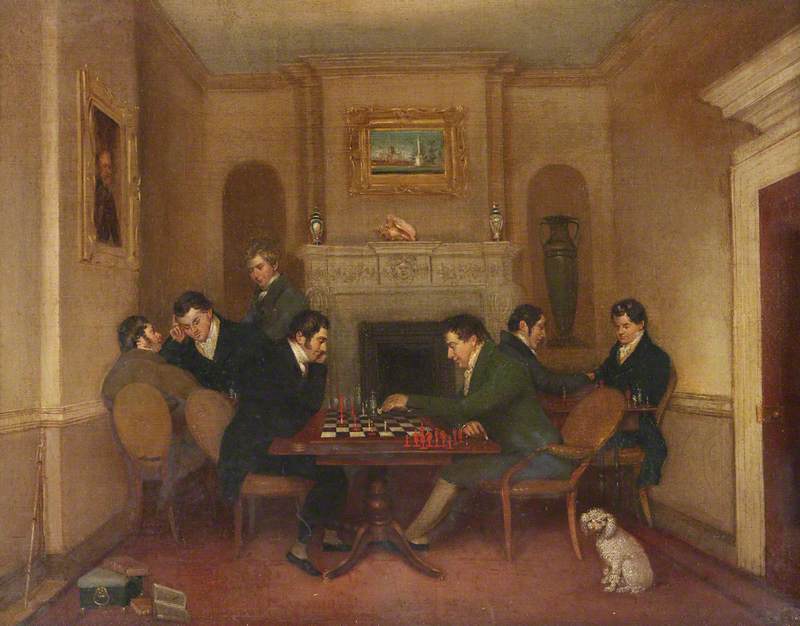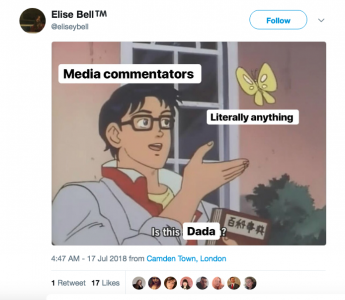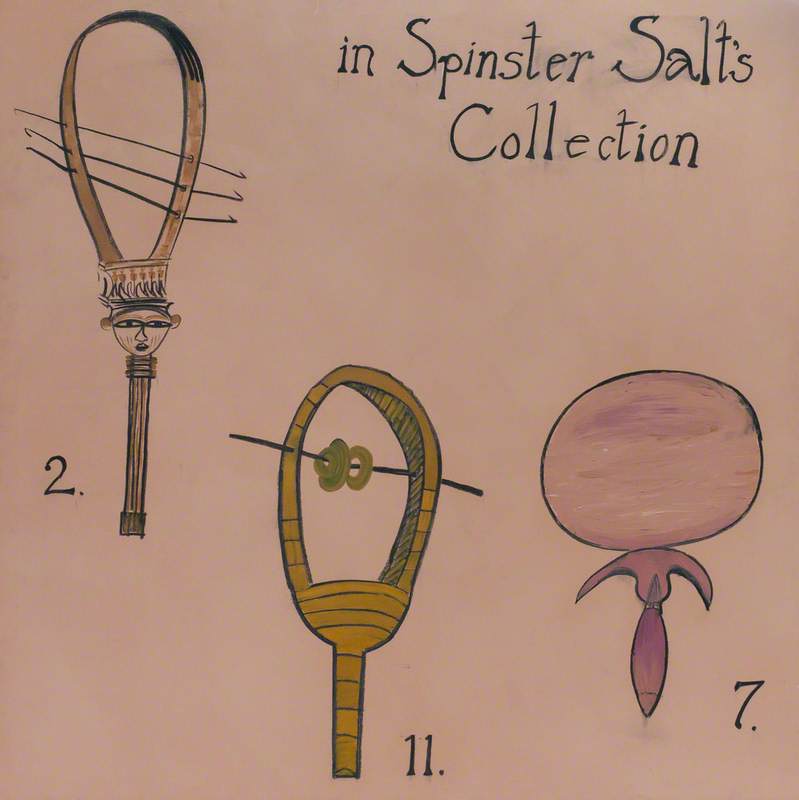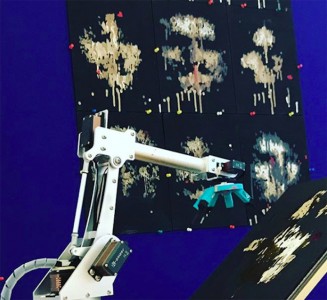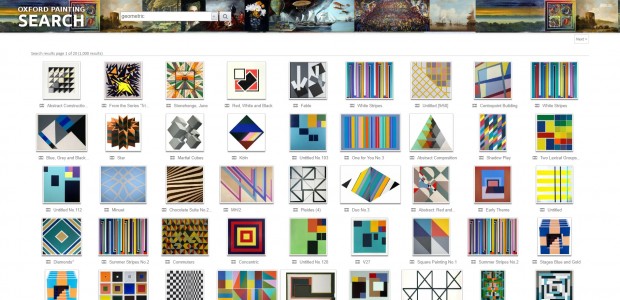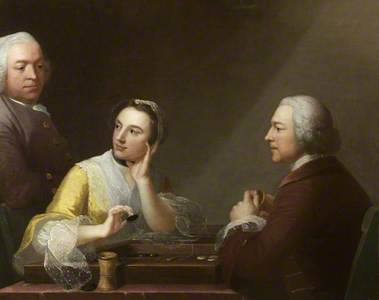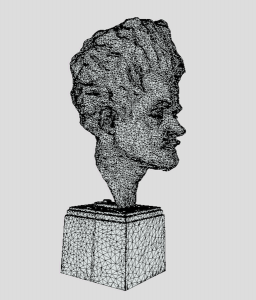The story goes that the first board game was invented by the king of an ancient Middle Eastern kingdom, to keep his people busy during a terrible famine. So powerful was the game that players forgot to eat on days that they played it, and while the lean years passed into memory, the game remained. That game, a crude wooden board where white and black seeds were planted in small depressions, was the ancestor of backgammon, still played worldwide.
A flurry of paintings of backgammon appears in sixteenth- and seventeenth-century Europe, some presenting it as a game of elegance and wit, as in Edge Pine's later The Backgammon Trio, but far more often the game was seen as a bawdy gambling prop of the peasants, as in Ostade's Tavern with Tric-Trac of Backgammon. Such table games were, it seems, strongly connected with drinking, roughhousing and general licentiousness.
Tavern with Tric-Trac or Backgammon Players
1669–1674
Adriaen van Ostade (1610–1685) 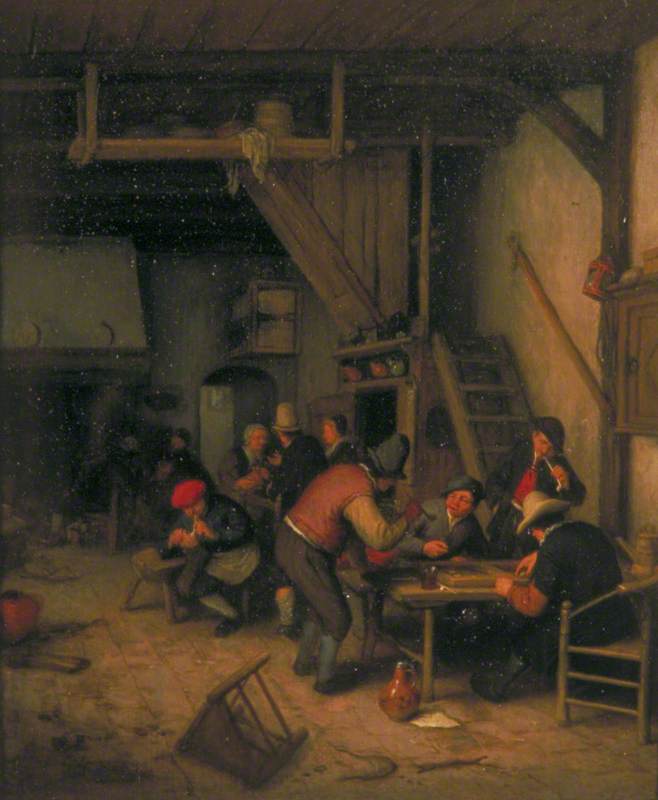
Backgammon seems to have been overtaken in artists' minds by chess as the eighteenth century progressed into the nineteenth. Chess is well documented in painting from its earliest appearance in Europe, and by the early nineteenth century both the refined intellectual pleasure of the game, as seen in the participants of Leeming's Hereford Chess Club, and its dreary graveward trudge, as seen in Daniels' Chess Players were common themes. The vibrant and bawdy energy of backgammon is tellingly absent, except in unusual examples such as an unknown Scottish school artists' Chess Players.
Playing at Draughts
(after John Burnet) c.1812
A. Wilkie (active c.1812) 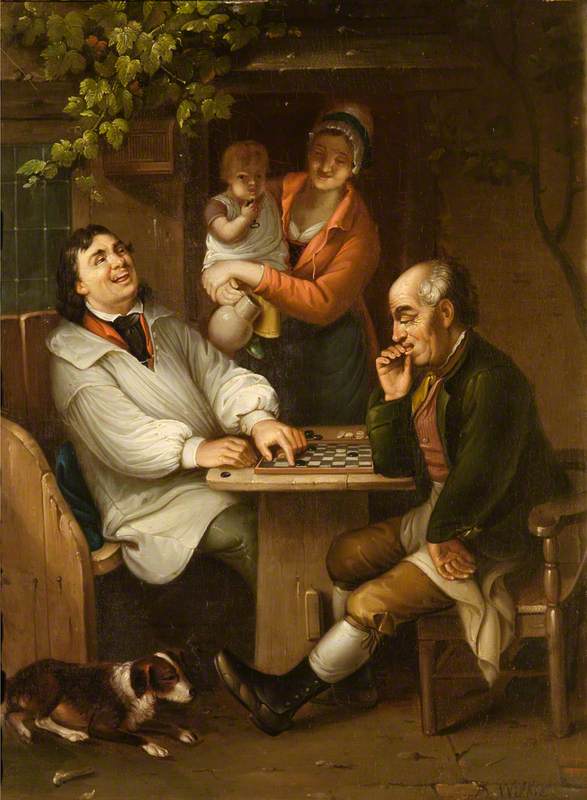
Yet for all the humanity expressed in these paintings, games are an interactive medium. Marcel Duchamp understood this. A famed chess enthusiast, his practice moved between painting the game (in examples like his 1910 Joueur d'échecs), writing about it and playing it. He observed 'A chess game is very plastic. You construct it. One creates beautiful problems and that beauty is made with the head and hands.'
The plasticity of games was explored by many twentieth-century artists, perhaps most famously by Fluxus, who from the early 1960s produced various 'Fluxkits', which included numerous tactile objects, counters and tokens, as well as scorecards and proposals for game rules that were often unfinished or unspecific, allowing the player to improvise and construct their own tasks.
This questioning of the role of museums in curating videogame art is not lost on curators.
Other artists explored the materiality of the games around them. Giacometti's Circuit (1931), for example, uses a wooden board with a groove smoothly bored into the surface to provide a track for a marble, held in a socket nearby. Circuit presents the haptic, tactile pleasure of a board game, provides a route for interaction, but leaves the viewer only able to look at it, held in frustrating suspense of play.
By the end of the twentieth century,
My Boyfriend Came Back From the War
2016, computer with projection by Olia Lialina (b.1971) 
Some artists used the hardware of the
Established artists have also become increasingly curious about the way games represent the world around them. In 2016 Harun Farocki presented Parallel I-IV at the Whitechapel Gallery. Four films explored how games construct and present a world limited by computing power and the priorities of gameplay. A montage of pixellated waterfalls, shrubs
Still from 'Rinse Repeat', 2015 by Robert Yang (itch.io)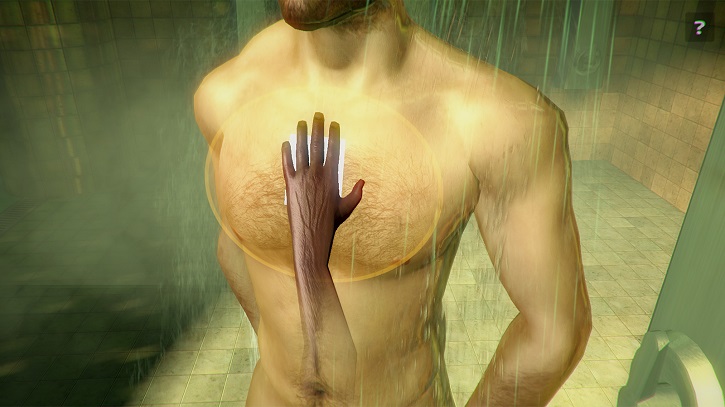
Since the early 2000s, internet bandwidth has grown,
Yang's 2015 Rinse and Repeat, for example, 'is a steamy first person showering game about giving a hunk a helping hand', an exploration of niche gay culture and digital liquid
Still from ‘The Artist is Present’, 2011 by Pippin Barr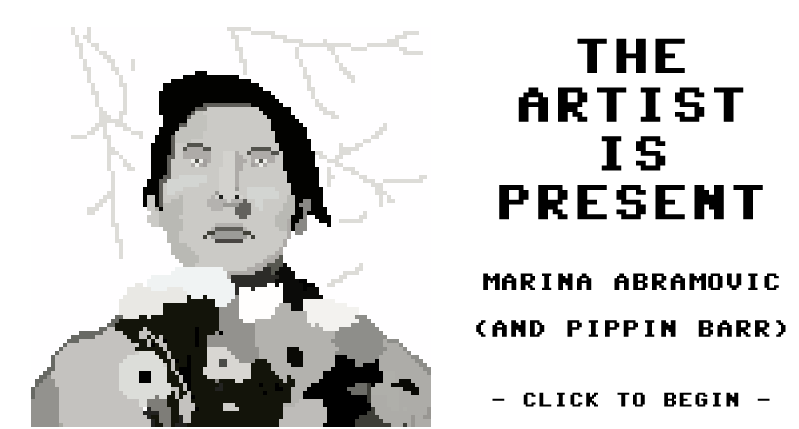
Barr's The Artist is Present (2011), while literally a game about waiting for a Marina
This questioning of the role of museums in curating
In a neat metaphor for the current state of games and art, 'Design/Play/Disrupt' will also exhibit Robin Baumgarten's Line Wobbler, a 'one-dimensional […] game with a unique wobble controller made out of a door-stopper spring and a several
Joseph Taylor McRae, art writer

